About Door County Library
Active since 1866, community libraries throughout Door County, Wisconsin combined in 1953 to become branches of the Door County Library (DCL). Currently there are seven branches and a main library in Sturgeon Bay which also houses the Miller Art Museum and the local history and genealogy collection in the Laurie History Room. Their resources include local newspapers on microfilm, a local newspaper obituary index, family histories, a cemetery index, marriage indexes, city directories, school yearbooks, censuses on microfilm, plat maps, biographies and histories of Door County, works by local authors, and much more. DCL hosts the Door County Library Newspaper Archive, a free-to-the-public online service sharing digitized newspapers encompassing the years 1862 – 1979. Door County Library is also a Recollection Wisconsin content partner.
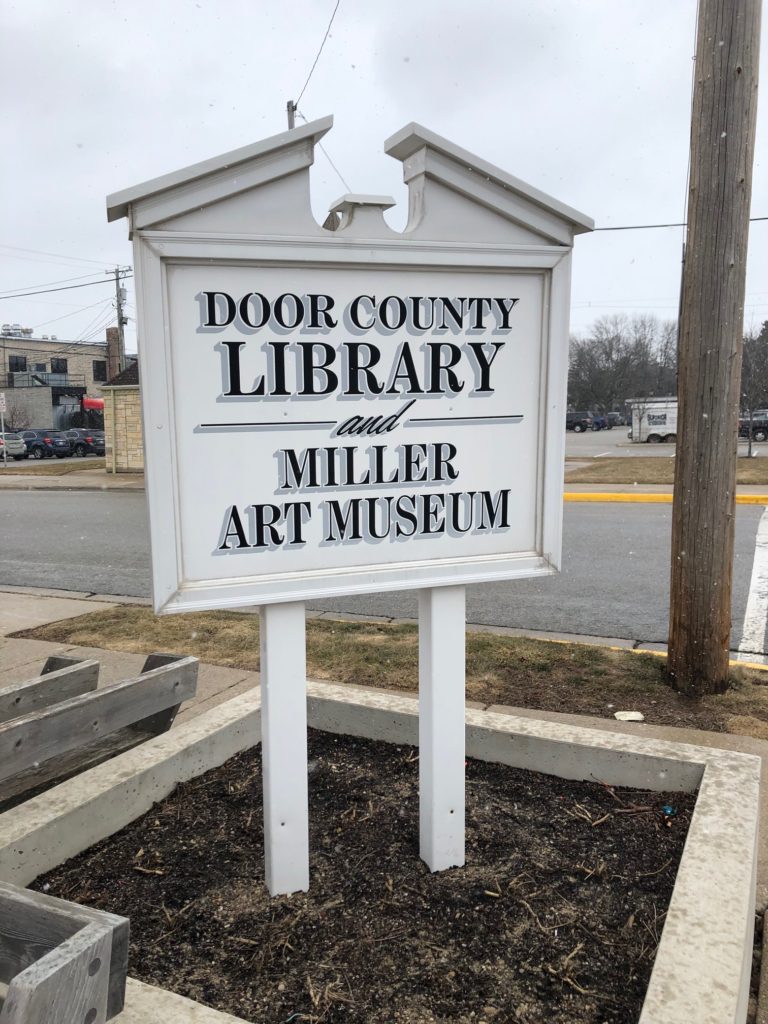
About Door County Historical Museum and Archives
The Door County Historical Museum was founded in 1939 as a one-room exhibit and has evolved to a modern, multi-level facility in Sturgeon Bay. The museum offers exhibits on every phase of county history, from the prehistoric Cambrian seas to the modern day. The Door County Archives, operating since 1988, are a special service of the Door County Library. Archival collections include church, business, and personal records, photographs, audiovisual materials, genealogy collections and research aids. The Museum and Archives recently combined services and hired Steve Rice as the Museum and Archives Manager of the Door County Historical Museum.
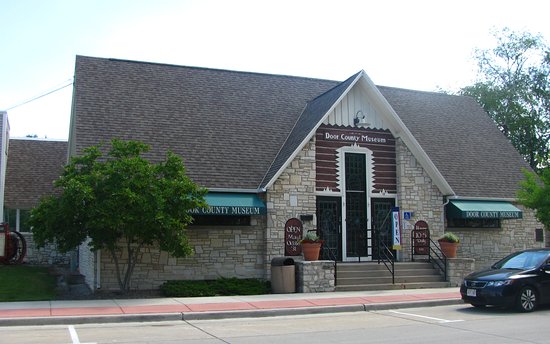
About the Practitioners
Laura Kayacan is the Adult Services Librarian for Door County Library in Sturgeon Bay. She was raised near Green Bay, but now resides in Door County, a place her family has visited and called a summer home for generations. Kayacan completed her MLIS at the UW-Madison Information School in 1980 and completed library technology courses in 2005 and 2006. Her library and technology paths converged in 2008 when she became the Door County Adult Services Librarian and their digital history projects wrangler.
I was drawn to digital projects because I have a background in library science and technology and digitization combines those two fields…I am very aware of the difference between accessing resources online and research limited to reading newspapers on microfilm page by page. – Kayacan
Steve Rice recently joined the Door County Historical Museum as the Museum and Archives Manager. Rice splits his time between the archives, part of the Door County Library, and the museum, a Door County municipal department. Rice also worked for the Door County Library as the Archives Researcher and as an Assistant Curator at the Door County Historical Museum. His academic background is in Art History, Political Science and Cultural Policy – an intersection of educational experiences that Rice says “…was meant to lead him back to his home community in Door County to work in cultural heritage.”
Early Digitization Projects
Door County Library began digitizing historical materials in 2006 when then-Adult Services Librarian Nancy Emery selected a set of early plat maps and Sturgeon Bay yearbooks to digitize with support from a Library Services and Technology Act (LSTA) grant. These items, accessible through Recollection Wisconsin, were selected for their popularity, frequent use and fragile condition.
In 2014, Door County Library implemented “Door County Memory” as part of the InfoSoup Memory Project, which aggregates library and historical collections from northeastern Wisconsin. Many volunteers contributed to the scanning, describing, and uploading work over the course of two years; they scanned so many items and pages that not all of them were able to be uploaded.
In 2019, Kayacan and DCL participated in Curating Community Digital Collections as a host site. Their organization’s project created digital preservation principles for DCL’s existing digital projects and files, and the resulting digital preservation policy now guides their digital work. Processes for storing and backing up files were of particular interest to Kayacan, as their digital files were stored in multiple locations but not on multiple formats. As a result, their digital files are now stored in cloud locations and on external hard drives, per digital preservation best practices and the “3-2-1 Rule” which suggests maintaining three copies of digital files on two different storage media with at least one copy stored off site.
Door County Library: Early Adopter of Newspaper Digitization
In 2010, Kayacan began planning for a newspaper digitization project in 2010 prompted by her own personal and family interest in Brown and Door Counties. Multigenerational family history is common among Door County residents and this long view of personal history plays an important role in the county’s commitment to local history preservation. For example, Door County made the decision in April 2021 to remove tornado sirens. “After all,” a radio host mused, “when was the last time we actually had a tornado in Door County?” The host suggested that the digitized newspaper collection probably held the answer!
Kayacan faced several challenges as the newspaper digitization project progressed. Being an “early adopter” of any project type means navigating some unknown territory with minimal guidance. Questions like “How should Door County Library display and share the digitized newspapers?” and “What is the proper way to assign copyright restrictions to newspaper page images?” are common to newspaper digitization projects. Kayacan’s approach to answering these questions included researching other newspaper digitization projects extensively, and forming her own community of practice by talking to practitioners and organizations undertaking similar projects. Two resources she found valuable include the Old Fulton New York Post Cards site for general project inspiration and the Minnesota Digital Library for standards and best practices applied to the Minnesota Historical Society’s Digital Newspaper Hub.
Newspaper digitization projects have become more prevalent in the years since Kayacan embarked on her journey, and the Wisconsin Public Library Consortium (WPLC), Wisconsin Historical Society (WHS), Wisconsin Newspaper Association (WNA), and WiLS are now working together to provide digital access to Wisconsin’s historical newspapers through the Archive of Wisconsin Newspapers, available through BadgerLink.
While researching and planning for the newspaper digitization project, Kayacan attended a library technology conference at Macalester College in Saint Paul, MN and learned about Minnesota’s newspaper digitization projects. Among the vendors at the conference was Northern Micrographics, a La Crosse, Wisconsin company that worked with quality digitization and Optical Character Recognition (OCR), including work for the Library of Congress’s Chronicling America project. Another vendor, ResCarta, demonstrated their open-source, free-to-use content management system. Because Northern Micrographics’ product and metadata worked well with ResCarta, the two vendors were a good fit for the DCL newspaper digitization project. DCL contracted with Northern Micrographics to digitize their newspapers and assist in creating and uploading some metadata into ResCarta. The ResCarta manual provides basic instructions and workflows, but Kayacan consulted other community practitioners for more advanced questions.
Kayacan encountered a maze of copyright restrictions as part of this project. While the newspaper pages themselves are not under copyright, some of the individual authors’ stories, artworks and photographs were subject to copyright and fair use rules, depending on when they were published and if the work was done individually or for hire. Because some of those answers can’t be known and different items on a newspaper page may be subject to different copyright rules, Kayacan has adopted a “one-size-fits-all” policy which is to limit their newspaper digitization efforts to those published prior to 1978, when the basis of current copyright law was passed in the Copyright Act of 1976. DCL shares their contact information on the newspaper archive page for any copyright concerns or take down requests. Check out Recollection Wisconsin’s Digital Projects Toolkit Copyright section for more info on how to address copyright questions.
Digital preservation is (and has been ) part of their digitization project planning work. Door County agreed from the outset to host the digitized newspapers on their municipal servers, subject to the same stringent backup process as the rest of the county’s materials. Kayacan also uses an external hard drive for backup procedure separate from the county’s server, following the recommended 3-2-1 storage principle.
The newspaper archive has had an unbelievable effect on the heritage environment here. It’s made the past much more available. -Rice
Door County’s digital newspaper archive has also influenced libraries in nearby communities. After hearing from Kayacan about her experiences, Oconto County, Kewaunee and Algoma Wisconsin communities embarked on their own newspaper digitization projects using ResCarta – a grassroots community of practice. Kayacan’s message to other local history organizations: You can do these projects today! Recollection Wisconsin is available for hosting and advice, other local history organizations provide support and a community of practice, and rendering these materials accessible online has benefits for your users and your organization. It may feel daunting and complicated at first, but just starting the process and not worrying too much about potential mistakes can be empowering!
Creating Content: Door County Speaks
The Door County Speaks initiative is a different kind of digital project. It bridges the gap between heritage work, library resources and academic oral history. We took an exciting library idea – the “library of things” concept – and combine it with digital heritage. It’s not so much generating digital content directly as it is creating tools to collect it in the future. -Rice
The local history community is a driving force behind the Door County Speaks oral history project. County local history organizations sought easy-to-use resources and tools for conducting oral histories with their own residents. For a long time, Rice heard from his county local history organizations a growing desire for more resources and equipment to conduct oral histories within their communities. The timing was right for this project, as their library was also exploring more options for lending non-textual items and equipment.
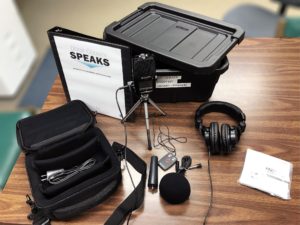
“Door County Speaks” seeks to make oral history more approachable, achievable and fun for library patrons while encouraging the use of best practices. This project provides pre-assembled kits with equipment and resources necessary to conduct oral history interviews. They are available for checkout at each of the Door County library branches. The goal? Get more people doing oral history and sharing stories! Rice was just about to launch the program in March 2020 when COVID-19 and the inability to safely gather in person required them to pause their project plans, but the program has relaunched as of May 1, 2021.
Door County Speaks was a fairly low-cost endeavor. A Nicolet Federated Library System Improvement and Innovation Grant fully funded the kit’s equipment, while a 2019 WiLS Ideas to Action grant provided crucial development support and exposure. When researching oral history resources online, Rice found that too many were written for an academic or professional audience and seemed inaccessible to local history practitioners at small or under-resourced organizations. In response, Rice included a quick guide to oral histories in the instruction binder for the kits, providing key information to interested and motivated local historians. His goal was to make the process as easy as possible by simplifying and making available easy-to-understand instructions and equipment. As someone without formal training in oral history work, Rice’s “outsider” perspective helped in this process: he often had the same questions as any other beginner and could write the guide accordingly.
Rice intentionally did not request or require that recorded oral histories be stored with the Door County Archives and Museum. Their goal all along has been to enable any user of their kits to create and keep their recordings for whatever purpose they desire. The instructional materials do offer a list of repositories where a patron might donate their recording. The instructions also include some basic digital preservation principles for those who decide to keep the digital files.
Another key philosophy for this project: Getting an oral history project started is more important than implementing a perfectly crafted process. For example, prior to March 2020 and the COVID-19 pandemic, Rice was able to conduct an interview with a 99-year-old Door County resident who has since passed away. If they had waited until their workflow was perfectly honed, they would have missed the opportunity to capture that very valuable story.
Lessons Learned
- Don’t let copyright questions deter you. Although Kayacan encountered many copyright restrictions on the digitized newspaper pages, she was able to make a project-wide decision about what to include. For Kayacan, a copyright violation would most likely only result in a takedown request, so sometimes the risks are low for the high reward of increased community use and collection visibility.
- An ounce of prevention is worth a pound of cure. The newspaper microfilm pages contained numbering and order errors, making processing the digitized images more difficult. Getting it right the first time helps save time during the image processing phase of any digitization project.
- Collaboration doesn’t happen overnight – but it’s worth it. Collaborations between heritage groups, libraries, and other stakeholders can take years to bring about projects. Kayacan called colleagues and traveled to conferences to get feedback, advice and guidance on the newspaper digitization project long before she was a part of CCDC. The broader connections created through her work and participation in CCDC paid off when it came time to implement Door County Speaks. Patience, relentless positivity, and being open to working together eventually bring mutual ideas to fruition.
What’s next?
Kayacan doesn’t plan to extend the newspaper digitization project beyond the current year due to copyright restrictions but she continues to focus on improving the descriptive information and implementing digital preservation best practices for the existing digital newspaper collection.
Rice is settling into his new role as the Door County Historical Museum and Archives (and Recollection Wisconsin Steering Committee Member!) and many of his projects are in the planning stage including increasing access to the tremendous amount of material in the archives. And Rice looks forward new collaborations, especially building relationships with other local history organizations to increase community engagement in their shared history.
Recollection Wisconsin makes this process easier, because it takes away the technical barrier to such a great extent. – Rice
The Door County Historical Museum and Archives reopened to the public on May 1, 2021. The Door County Speaks oral history kits have been refreshed and are now available to the public for use.
Just the highlights? Download Door County Library’s Digital Readiness Case Study in Brief.
This work is funded through an Archives Collaboratives Implementation Grant from the National Historical Publications and Records Commission (NHPRC), the granting arm of the National Archives. Visit Digital Readiness Community of Practice for more information.

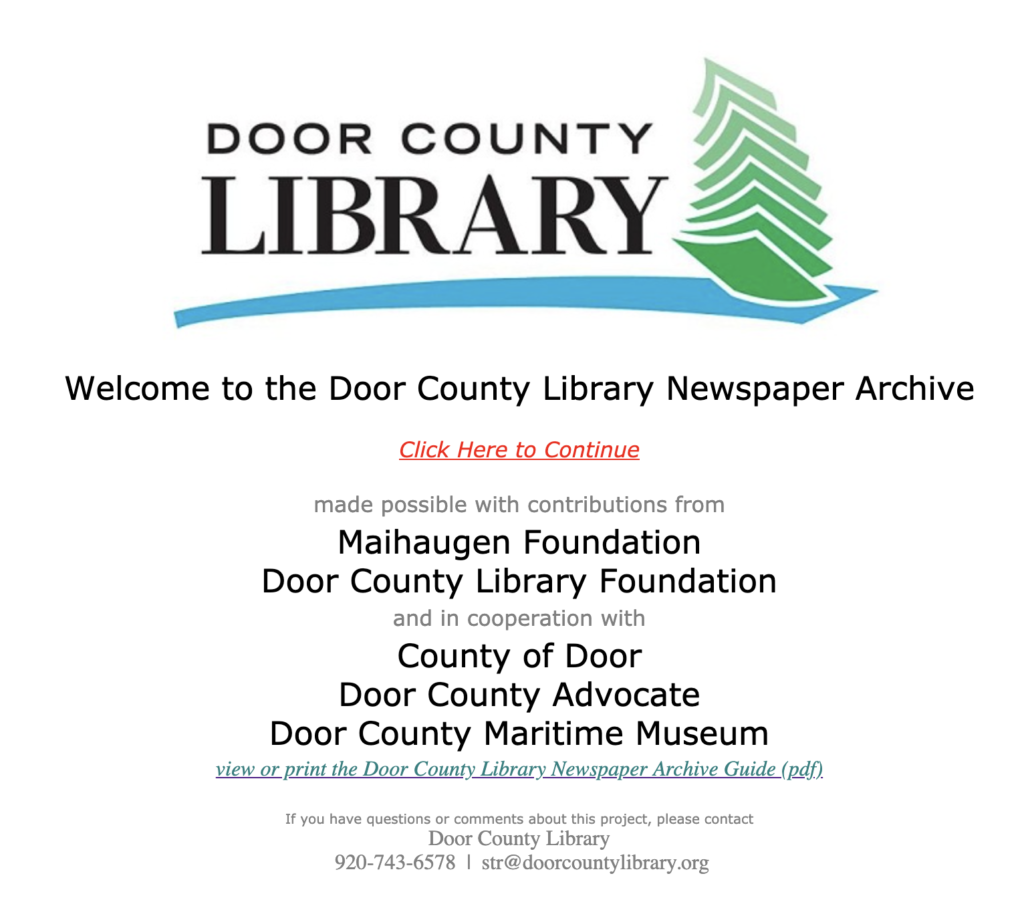
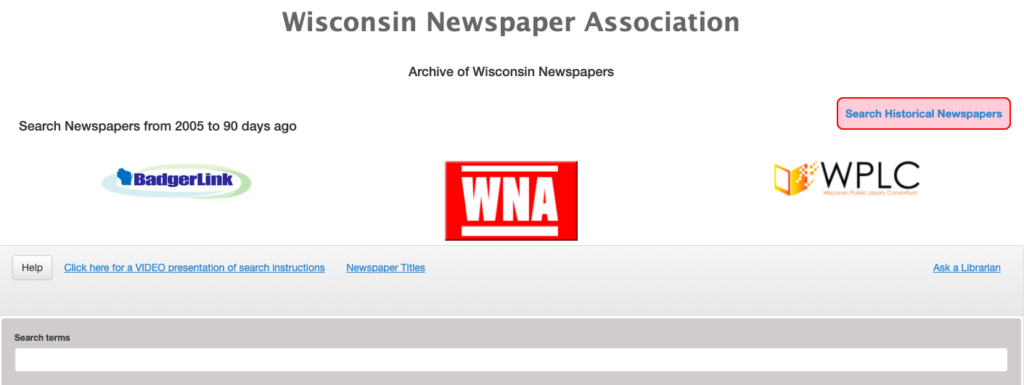


You must be logged in to post a comment.